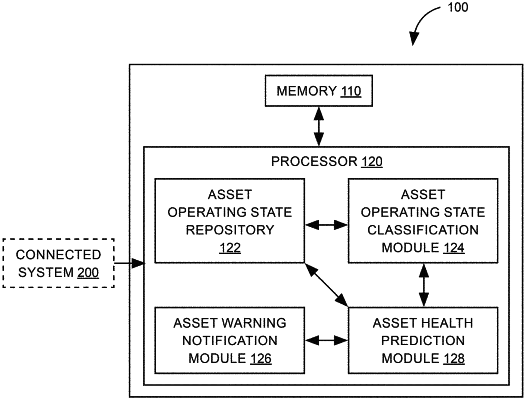| CPC G05B 19/41875 (2013.01) [G05B 19/4183 (2013.01); G05B 19/41885 (2013.01)] | 20 Claims |

|
1. An AI-based smart asset health surveillance system, comprising:
a memory having computer-readable instructions stored therein;
a processor configured to execute the computer-readable instructions to:
access a connected system having a plurality of production and/or process lines, wherein each of the plurality of production and/or process lines comprises a plurality of assets;
receive sensor data corresponding to each of the plurality of assets within the plurality of production and/or process lines, wherein the sensor data is indicative of health of each of the plurality of assets;
identify one or more distinct operating states for each of the plurality of assets corresponding to each of the plurality of production and/or process lines based on at least the sensor data;
develop an asset operating state representation for each of the distinct operating states for each of the plurality of assets to characterize the behavior of the respective asset and a condition of each of the production and/or process lines;
determine interconnections within the asset operating state representation and establish one or more dependencies between the operating states for each of the plurality of assets corresponding to each of the plurality of production and/or process lines;
classify the interconnections between the operating states as one of strong interconnection and a weak interconnection based on time-occurrence of a plurality of events and/or hierarchy of assets within the production and/or process lines;
identify one or more warning notifications for the plurality of assets based on the sensor data and the asset operating state representation; and
predict one or more downtime and/or anomalous events for the plurality of assets corresponding to each of the plurality of production and/or process lines based on the identified operating states, interconnections between the operating states for the assets, and the one or more warning notifications.
|